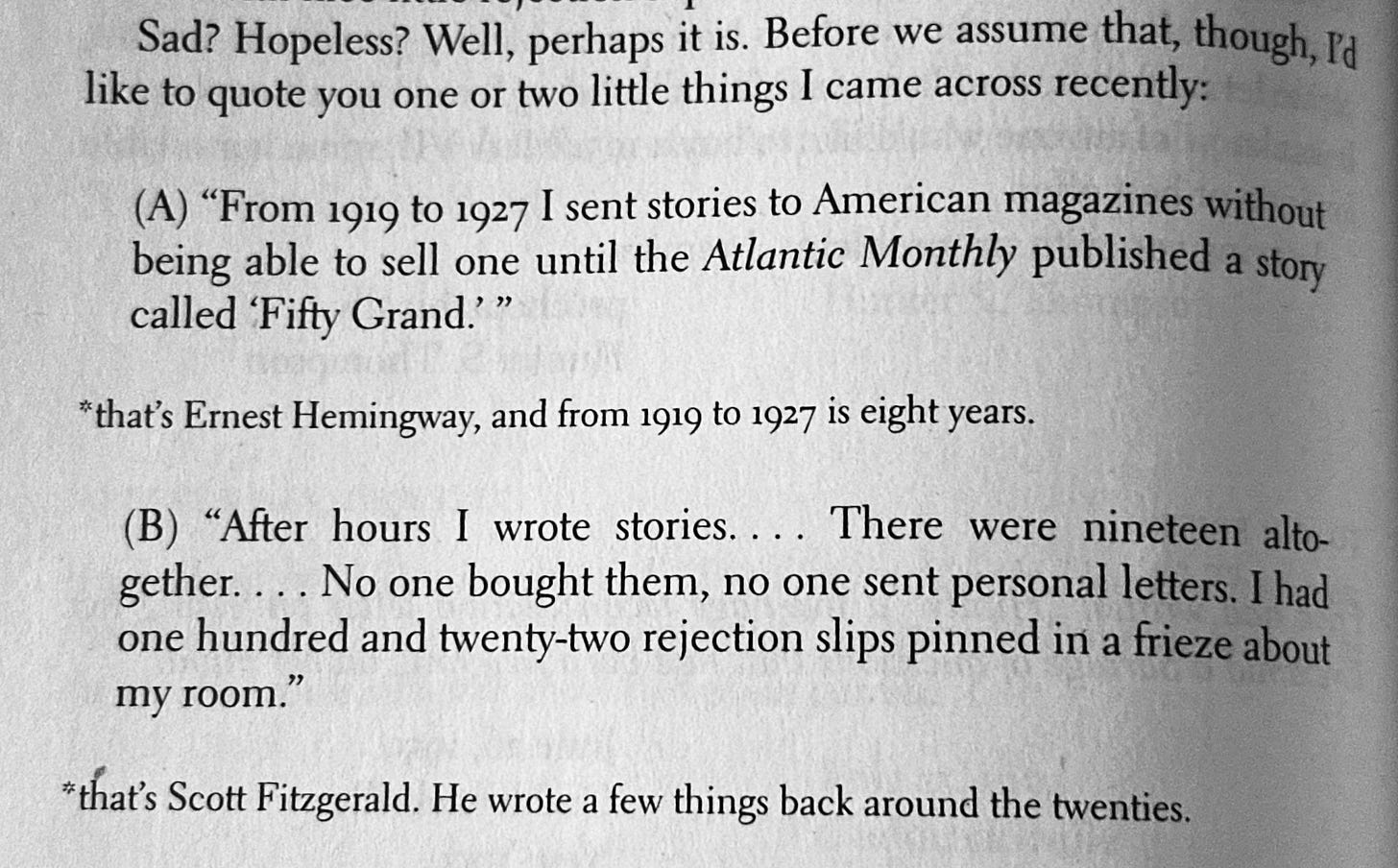From Dan
November 2024 — Brooklyn, NY
From Part I:
In February of this year, my friend John and I set out to make something and make something we did.
Long story short, we created a device, called verba, that is a display for quotes and affirmations. The device has a sleek design and e-paper display (think e-reader screen), so uplifting quotes are always within sight. The device has a free app and extensive library of quotes, so that you see exactly the sort of inspiration that you want to see.
Without further ado, here are three more lessons that we have learned throughout the process.
IV — On Online Advertising
Online advertising is a very weird thing. It quite literally allows the internet to function (allowing countless “free sites” to be free). But what percentage of people a) know this and b) know how it works? I would guess about 1% of people.
After all, why would you notice? Online advertising is as invisible, yet important, as ball bearings or the crushed stone that is used to make concrete. If you think about ball bearings or concrete aggregate, you are a) weird and b) likely the type of weird that is conducive to success. Yet, we would all certainly feel the consequences if any one of these three things disappeared even momentarily.
Given that verba is a product that is sold exclusively online (hopefully just for now), my business partner John and I learned about this strange art out of both pure necessity and curiosity. And so, here I am to report back our findings.
So, what is online advertising?
The big picture of online advertising is very simple. We all use free sites like Google and Instagram, and the toll that we pay is that Google and Facebook (now Meta), allows companies (advertisers) to show their products to us in exchange for a fee.
What fee do advertisers pay?
It seems that most online advertising is billed either by the number of clicks (cost per click (CPC)) or by thousand views (cost per mille (CPM)). If you’re selling a product, you’ll pay by click on Google (CPC) and by thousand views on Facebook (CPM).
For the sake of brevity, here are some of the things we discovered:
Audience is king. You could have the greatest ad ever conceived, but show it to the wrong audience and you are toast. As a small advertiser, you don’t want to pay for a single set of eyeballs that isn’t potentially interested in your product. Big advertisers can afford to do this to a degree in the name of “brand awareness” and name recognition.
Algorithms are incredible tools at matching audiences and products IF (and only if) there is sufficient data to do so. The advertising algorithms are probably wonderful for selling things like skincare products or shirts, simply because there is so much data. For a niche product (without much sales data) like verba, algorithms are less capable and less capable means expensive.
The cost of acquiring a customer often decides a product’s life or death. In other words, if you have to spend $100 in advertising costs to sell a product that sells for $50, you do not have a marketable product. This might seem obvious, but like the obvious fact that a bite from a venomous snake can be fatal, sometimes you remember too late.
Not all advertising is created equally. In other words, advertising on Facebook or Instagram is fundamentally different than say advertising on Google search. One is not necessarily better, but they are totally different.
Without getting into the weeds, advertising on a platform like Facebook is known as interruption advertising. Picture jumping in front of someone on Fifth Avenue and saying “Ever heard of our device? Here’s why you need one”.
In contrast, when advertising on Google, you might be dealing with people searching for “gifts for readers”. Thus, we are dealing with people with what’s known as “intent”. They are already looking to purchase something.
V — Anything Worth Doing Takes Forever
One of my new favorite writers is Hunter S. Thompson, the madman and father of Gonzo Journalism. If you’ve ever read Hemingway, Hunter’s early writing has a similar style, except that with Hunter, everything feels much more real in a way that is hard to describe. I like him so much that I ordered a book of his letters that he wrote when he was young.
In one of his letters, he says that he’s discouraged by the fact that all of his stories so far have been rejected by publishers.
In the letter, Hunter notes that Hemingway, one of history’s best writers, didn’t sell a story for 8 years. And yet he kept writing. That astonished me. Underneath is the same story for F. Scott Fitzgerald. He hung 122 rejection letters around his room. And yet he kept writing.
The cruel thing about history is that it has been scrubbed clean of all details like this. Nobody wants to hear that even the greatest writers struggled for many years.
Perhaps this reads to you as the same trite “never give up” rah-rah story that we’ve all learned to tune out. But, hopefully not. I find it much more real to learn that even for the greats, there was no shortcut, just continuous improvement and iteration.
VI — Simplicity is Intelligence
This is another counterintuitive truth that I have come to realize. Those who have true mastery over something and are intelligent make everything simple.
For a great example of this, look no further than physicist and renaissance-man Richard Feynman (and his fantastic memoir). Despite being a Nobel Prize-winning physicist, Feynman speaks with such clarity and simplicity that it’s intoxicating.
So, how does this relate to business?
As I’m sure is no surprise, business ideas often appear to us as vague, ugly, blobs of jargon and confusion. These blobs probably started off as insightful ideas passed down from teacher to student, but became slightly corrupted with each iteration, almost like a giant game of telephone. But at the core of these frustrating blobs, are fascinating truths.
So, what are these fascinating truths?
As we discussed last time, a product is simply a solution to a problem, and a market is a collection of people with the same problem. Doesn’t that feel like breathing in a breath of fresh mountain air?
Let’s do the same for the revenue of a company that sells products. You might tense up after reading revenue, but remain calm.
Fundamentally, revenue is the product of:
How many customers you have
How many orders your customers make
The average order value of your customers’ orders
That’s it.
So, if you’d like to increase the revenue of a company, you can:
Find out how to make your product appeal to more people (& solve additional problems)
Make a case for why your customers need more than one of your product (it’s a great gift etc.)
Create additional accessories / add-ons that would enhance your customers’ experience with your product
Doesn’t that feel like an epiphany?
Simplicity is intelligence. Be wary of any and all who are incapable of concise and jargon-free explanations.
Conclusion
I hope you enjoyed these additional three lessons. I certainly did.
If you are interested in learning more about the device, visit verbawords.com
Thanks for reading guys.
If you enjoyed this one, make sure to subscribe to receive posts like this via email and consider sharing with a friend.







